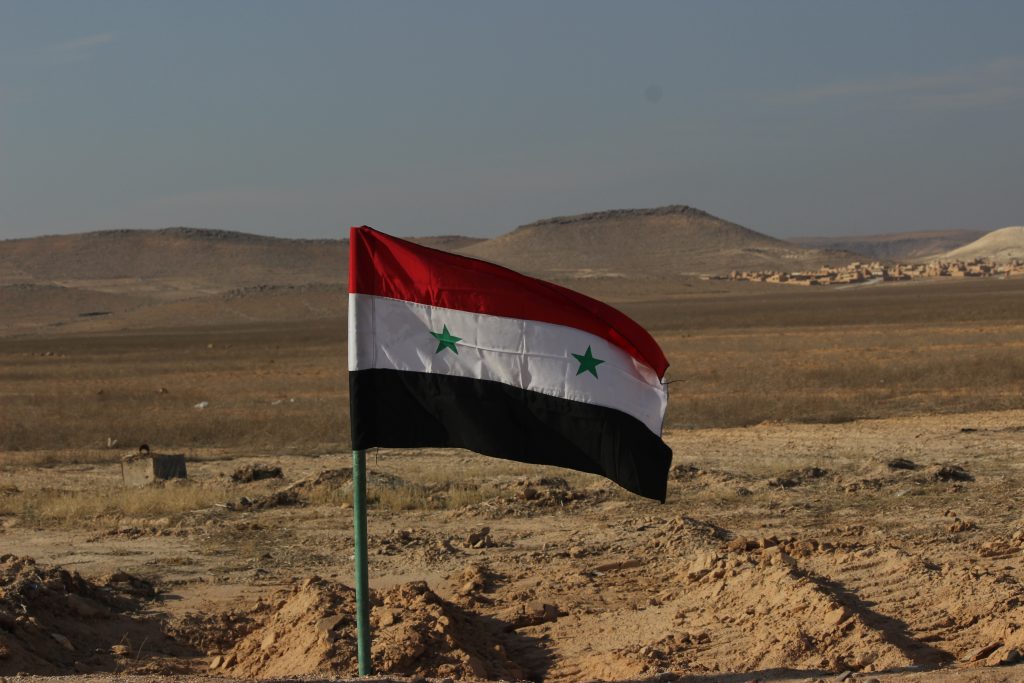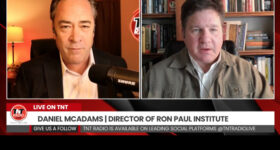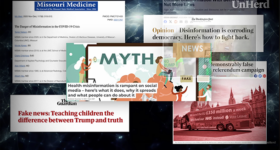21st Century Wire says…
The following is a video of one of the interviews, conducted by 21WIRE Associate Editor, Vanessa Beeley, during her time in Aleppo, observing the liberation of the eastern districts from a five year Nusra Front-led terrorist and extremist-militant, occupation. It clearly demonstrates how NATO and Gulf state funded extremists and mercenaries, embedded in East Aleppo, used the externally generated, sectarian myth, to control and intimidate civilians living under their rule.
Danny Makki, an independent Syrian commentator and freelance journalist, based in Damascus, wrote the following analysis of this “sectarian” myth that has been used to support the NATO and Gulf state proxy military, political and economic, illegal, intervention in Syria:
“The primordialist assumption that the war in Syria is of an exclusively sectarian nature is fundamentally flawed. Sectarianism may be a component in the conflict, however its role as a generating cause of the unrest falls under scrutiny.
The brutal conflict now approaching its sixth year is generally considered sectarian in character, as a “popular majority Sunni struggle against a minority led government”, but this is highly simplistic and ignores the significant cross-religious attachments and ties which have served as the greatest counter-reaction to sectarianism in Syria.
There is no evidence to suggest that in the lead up to the 2011 “uprising”, sectarianism was rife in Syria, or that the country’s religious groupings were at breaking point.
With a population of roughly 24 million, Syria’s ethnic and religious diversity is unique, with up to 60 percent Sunni Muslim and a wide array of minorities from Alawites, Christians, Kurds and Druze making up the remainder. Syria has an explosive socio-religious mix and has been dominated by a secular Baathist ideology for over half a century.
It could be argued that sectarianism in Syria was overshadowed significantly by a strong sense of national identity; Syria prior to the current conflict did not have a sectarian problem on a significant scale. There were some tensions and soft rivalries between different religious communities, but the strong sense of Syrian identity was dominant.
Sectarian identity was clearly a secondary aspect of the conflict, the lack of interest in partition of the country on religious or ethnic lines is the prime manifestation of this. As Jorg Dostol, fellow at the Center For Syria Studies explains:
“..in fact, there exists no serious domestic demand in Syria to solve the current crisis by splitting the country into ethnically homogenous smaller states”.
The 1982 Muslim Brotherhood uprising is an ideal example: it was located in the central heartland of Syria in the traditionally conservative city of Hama, however equally conservative Sunni-mojority areas such as Daraa and Idleb were free from revolt.
The Daraa region where the uprising was sparked in 2011, is predominantly populated by Sunni Arabs but traditionally known for upholding an unwavering history of loyalty to the Syrian government. Daraa has produced more than its fair share of party and state officials. This suggests that socio-economic disparity was a fundamental factor for the political unrest.
A comparison between 1982 and 2011, shows that sect or religious identity based on age old ideological ties had no relation to the actions of communities in Syria.
The presence of religious militias and fighters from both sides of the conflict with the religious tensions and ideological escalation they bring, has given the Syrian arena a sectarian dimension, however this was a phenomenon externally imposed rather than one with deep roots within the country’s social fabric.
The economy or the sect?
The role of political economy as a conduit for social protest and discord cannot be disregarded. Economic grievances were an important factor central to the protests against the Syrian government in March 2011. This dissatisfaction could be directed towards a sectarian narrative, as Syria expert, Nicholas Van Dam elucidates:
“The overlap of sectarian, regional and socio-economic contrasts could have a mutually strengthening effect. Popular discontent and socio-economic tensions could sometimes be directed and even stimulated through sectarian channels”.
The socio-economic conditions that allow sectarianism to thrive are therefore equally important to the presence of sectarianism itself. Bashar Al-Assad’s biographer, David Lesch, predicted in 2005 that economic problems could lead to popular unrest:
“At worst the country could implode, with regime instability leading to a potential civil war among Syria’s varied ethnicities and religious sects, with radical Islamist groups waiting in the wings to assert themselves as the political, social, and economic environment deteriorates”.
Corrupt business networks and circles were the norm in the Syrian economy in the lead up to 2011. In 2010 Syria was in 127th place on the index of financial transparency. In a country where economic growth was stagnating, the discontent and anger were at times channeled through sectarian avenues.
Colonial divisions
The history of identity politics and colonial division in Syria show episodes where national unity has triumphed in the face of division.
The Sykes-Picot agreement in 1916 partitioned the Arab world into sub-states to be merged into the respective British and French empires. Syria fell under a French mandate heralding another phase of colonialism after the centuries led rule of the Ottoman Empire.
From the beginning of their colonial rule, the French sought to divide Syria into four sectarian sub-states in order to make ruling the country easier. This plan for partition was heavily opposed by the indigenous and heterogeneous Syrian population. The French plan to divide Syria backfired spectacularly sparking a series of local tensions and led to the Great Syrian revolt in 1925, in which all sects and religious groups participated.
The primordialist approach that sectarianism is a reflection of age old historic differences cannot be applied in Syria, it has been proven to be simplistic and lacking in depth. Other factors contributed to sectarianism, but unlike Iraq, Syria does not have a history of genuine sectarian division.
A close inspection of the narrative surrounding the crisis exposes numerous assumptions regarding the nature of political identity in the country. An identity, with a strong disregard for political economy, social fabric, ideology and colonialism.
While sectarianism may be a component, its role as the primary cause of the war remains secondary.”
***
READ MORE SYRIA NEWS AT: 21st Century Wire Syria Files
SUPPORT 21WIRE and its work by Subscribing and becoming a Member @ 21WIRE.TV
















